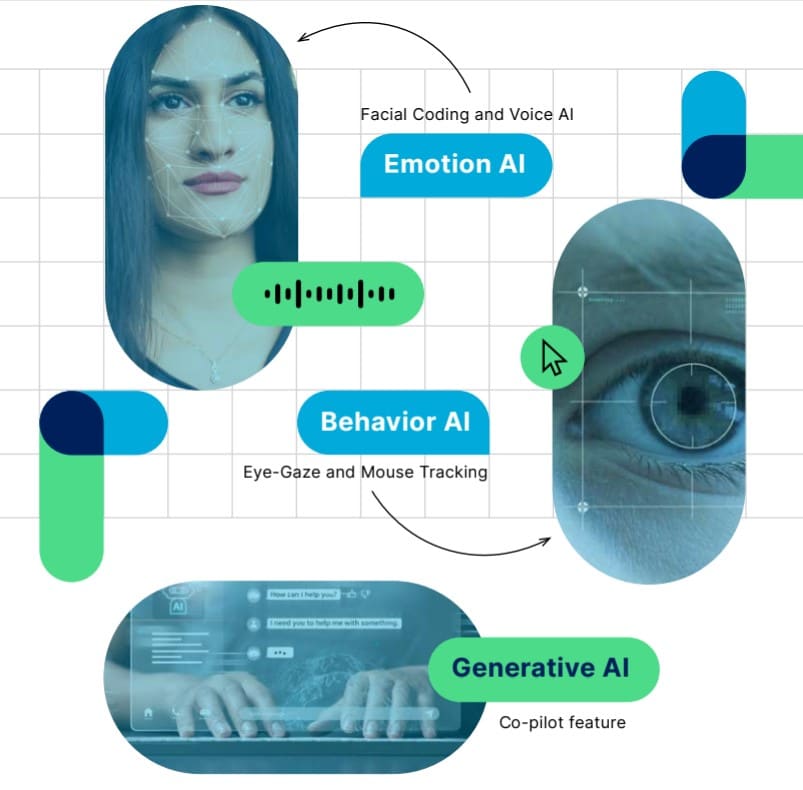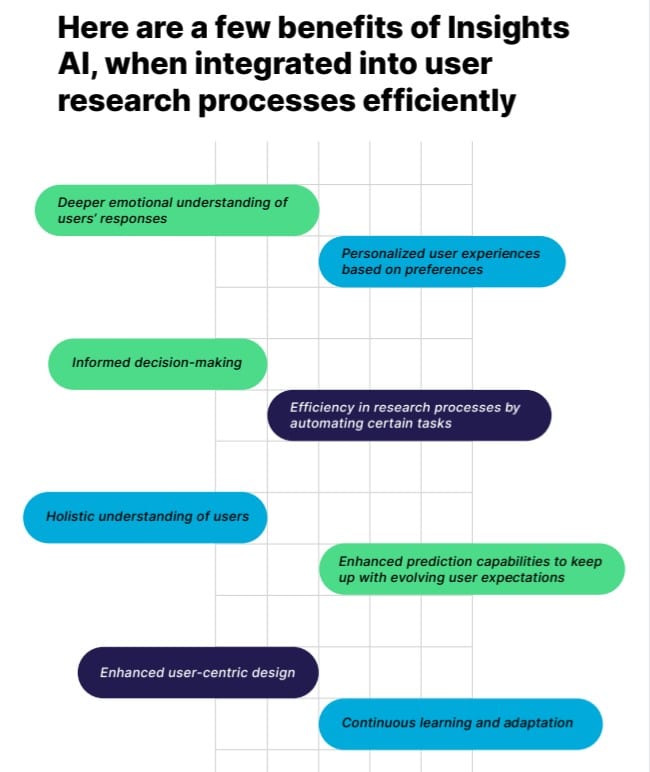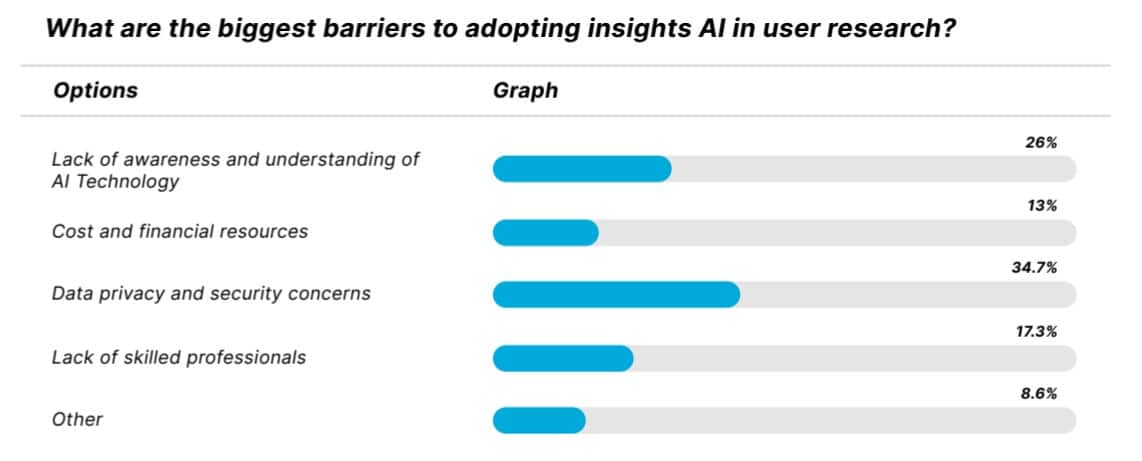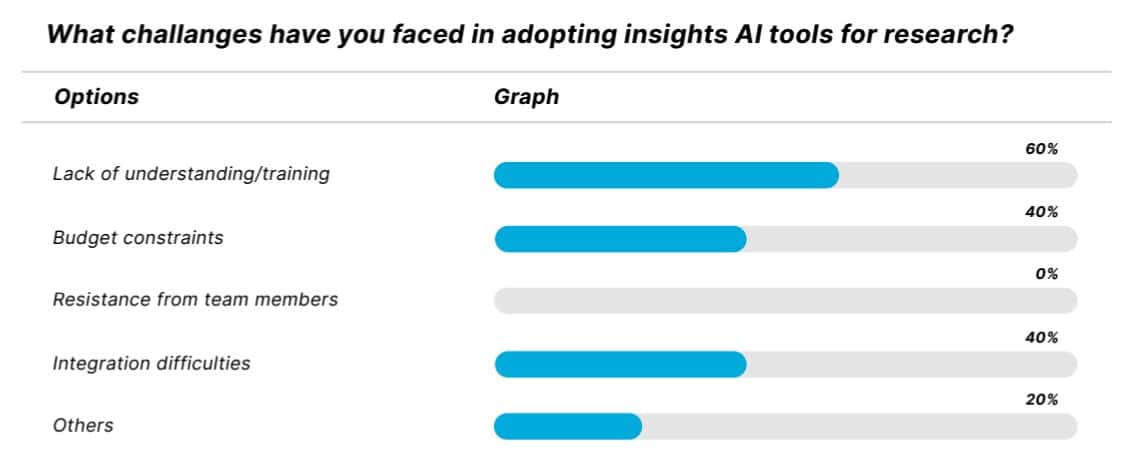AI is of course bigger than just the Generative variety—and when communicators can learn to understand the bigger AI picture, new research from human insights AI firm Entropik finds a rich meta-analytical plateau awaiting that’s loaded with marketing and PR treasure. This multi-variety version is referred to as Insights AI: a set of technologies—Emotion AI, Behavior AI, and Generative AI—that apart from analyzing data, could actually help marketers understand the subconscious human emotions that can shape consumer decisions.
In the inaugural edition of the firm’s Annual Industry Report on Insights AI, survey data drawn from a diverse pool of 100+ product, UX, and market research heads highlights the growing popularity of Insights AI, with 76 percent of participants viewing it as an opportunity to reshape the market research industry through hyper-personalization.

Insights AI integration helps brands by offering unparalleled depth and precision in understanding consumer motivations, preferences, and experiences. The survey reveals that nearly 58 percent of respondents are familiar with the term “Insights AI” in research, and notably, 20 percent of participants expressed a belief that traditional research methods have become ineffective in contemporary times.
The report delves deep into Insights AI in relation to user research and consumer research across various industries and offers an understanding of its evolution, applications, and future trends.
One of the findings underscores that Insights AI has significantly reduced the time for receiving insights, achieving a six-fold improvement compared to traditional methods. The report further emphasizes the broad impact of Insights AI across industries, particularly in the e-commerce, financial services, and over-the-top online content sectors.

Key findings:
Insights AI in user research
- 29.1 percent see AI as a tool for enhancing the e-commerce user experience through personalized product recommendations
- 47 percent of respondents identify a lack of AI expertise as a major hurdle in the BFSI sector, while 35.2 percent cite regulatory compliance concerns
- 34.7 percent cite data privacy and security concerns
- 26 percent identify a lack of awareness and understanding of AI technology
- 13 percent consider cost and financial resources to be the biggest barriers to adopting Insights AI
Insights AI in consumer research
- In the OTT sector, 27 percent believe that predictive content curation is a significant benefit offered by AI, while 23 percent see its potential in addressing content fatigue and providing personalized recommendations
- 60 percent of respondents believe that consumer packaged goods will be the most impacted industry by Insights AI
- Surprisingly, only 20 percent of industry leaders have adopted Insights AI-based tools in their businesses, revealing a potential growth area for the technology

“Our first annual industry report is not just a compilation of data; it is a strategic guide for businesses navigating the complexities of user research and consumer research in the age of AI,” said Ranjan Kumar, co-founder & CEO of Entropik, in a news release. “This report underscores our unwavering commitment to research, innovation, and democratizing access to AI knowledge. It’s not just about the trends, it’s about the ‘why’ and the ‘how’—empowering businesses to harness the power of AI for real-world impact. The valuable insights gathered from marketers reflect not only the current pulse of our industry but also inspire us to continue pioneering solutions that drive progress.”

The report also ventures into the future with a dedicated chapter on “Trends to Watch Out for in 2024.” The predominant upcoming trends in Insights AI encompass Prescriptive Analytics, Moderated Interviews with Emotional Awareness, and Synthetic Users with Emotional Awareness. The section also addresses challenges and considerations, offering businesses a strategic roadmap to effectively leverage Insights AI.
Summarizing the report’s significance, Entropik emphasizes that Insights AI research has the power to influence and change consumer behavior, improve brand loyalty, and facilitate the repositioning of products and services by creating contextual cues.



